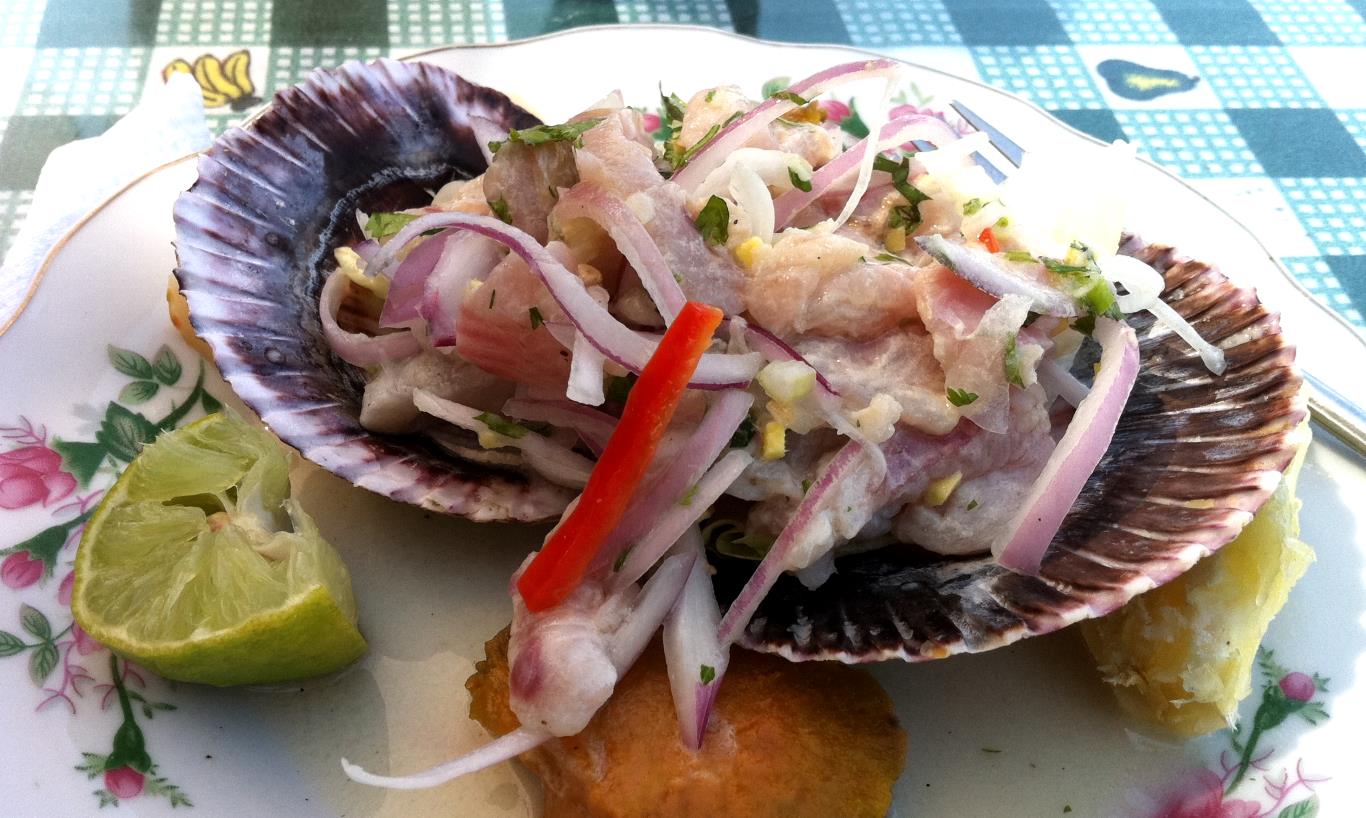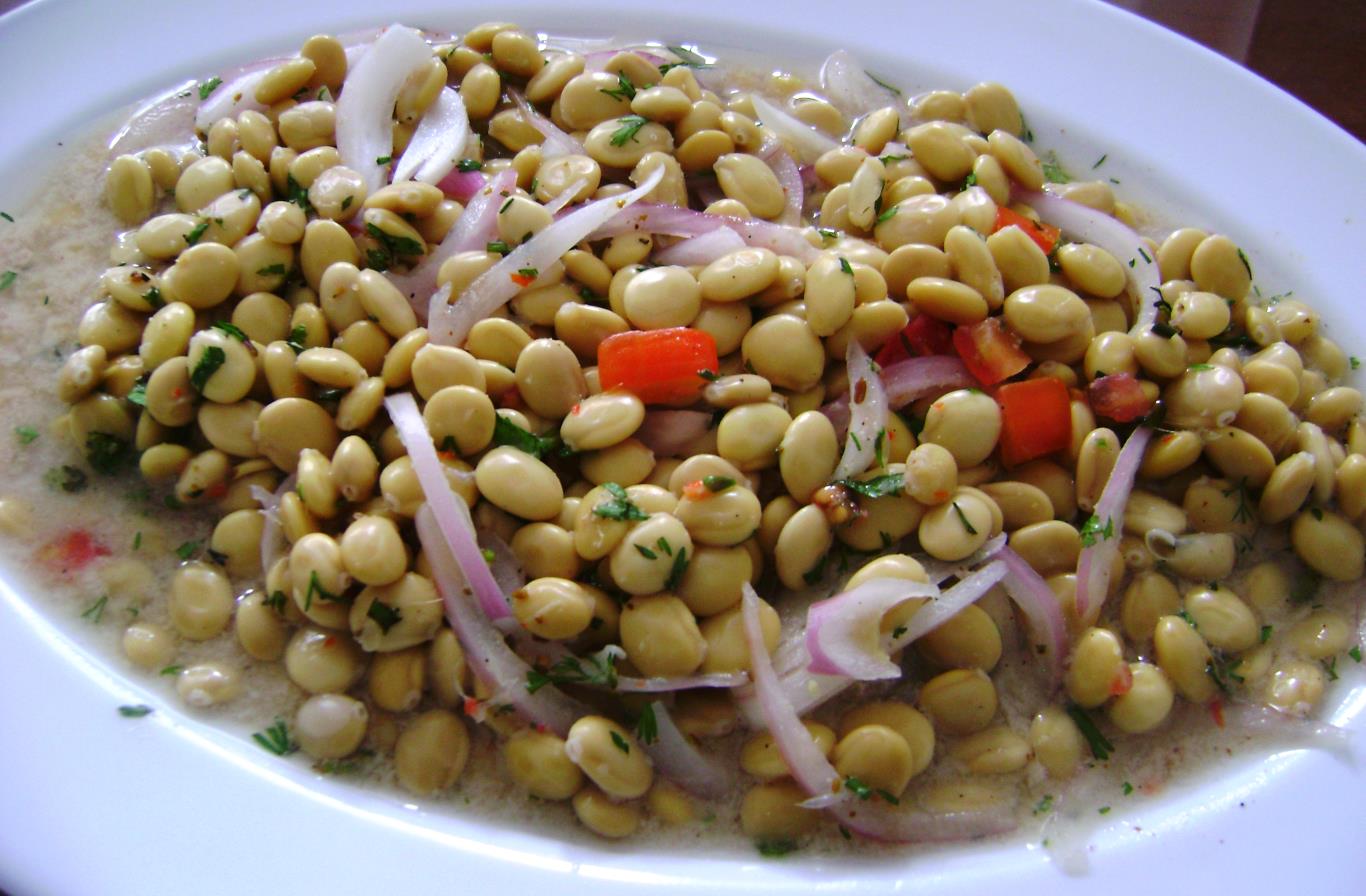Ceviche is one of the most iconic dishes of Peru. But do you know how many types of ceviche there are beyond the common ceviche simple and ceviche mixto?
How about ceviche made using dried ray meat? Or mushrooms? Or bull testicles? Yep, however you spell it — ceviche, cebiche or seviche — the world of ceviche is probably more diverse than you first imagined…
A classic ceviche simple from Ica, Peru. The fish used in this ceviche is lenguado (sole). Photo by Patty Ho, flickr.com.
Ceviche Simple (Simple Ceviche)
This is your classic ceviche: fresh fish marinated in lime juice, normally mixed with ají chili peppers, chopped red onions, salt and cilantro. If a menu just says “ceviche” — with no other details — this is what you’ll be getting. Some menus specify “ceviche simple” to distinguish this dish from other types of ceviche dishes. A menu might clarify things even further by saying “ceviche de pescado” (fish ceviche).
Ceviche Mixto (Mixed Ceviche)
Ceviche mixto is a slightly more elaborate — and some would say more interesting — version of simple ceviche. It’s the same basic dish, but with added seafood such as shrimp, octopus (pulpo), squid (calamar), clams (almejas) and/or scallops (conchas de abanico). The dish might also have a couple of mussels and a small crab, both in their shells.
Ceviche de Pulpo (Octopus Ceviche)
Ceviche de pulpo is an octopus ceviche. You can also find ceviches made solely from squid, clams, shrimp of scallops, but octopus ceviche is more common in coastal Peru. If you don’t like the fishier texture and taste of standard ceviche, then try ceviche de pulpo. There’s an art to preparing it correctly — especially getting the octopus tender rather than chewy — but it’s delicious when done right.
Ceviche de conchas negras served in a restaurant in Lima, Peru. Photo by HugoMon, Wikimedia Commons.
Ceviche de Conchas Negras
For something different, try ceviche de conchas negras. Conchas negras (“black shells”) are a type of clam known scientifically as Anadara tuberculosa. In Peru, conchas negras are harvested in the coastal mangrove forests of the Tumbes Region. It’s most common, therefore, to find ceviche de conchas negras along the north coast of Peru, but you’ll also find it served in cevicherias in Lima and other major cities. To protect the conchas negras in Tumbes, each year the government announces a closed season for harvesting and eating them. In 2017, this ran from February 15 to March 31. The dish itself has an inky black color and a unique salty-fishy taste, depending on the preparation.
Ceviche de Camarones (Shrimp Ceviche)
Ceviche de camarones, or shrimp ceviche, is particularly popular in the Arequipa Region of Peru and along the coast of Ecuador. It’s prepared in a similar way to a regular ceviche. Tomato is sometimes added to the mix. In Ecuador, ceviche de camarones is sometimes served with chifles (thin green plantain chips) or patacones (thick green plantain chips).
Ceviche de Champignones (Mushroom Ceviche)
This is one of the most popular vegetarian versions of ceviche. Instead of fish, the dish uses mushrooms, making it meat-free and a good option for anyone looking for vegetarian dishes in Peru. It’s not all that common, but you’ll find it in some vegetarian restaurants. Some traditional cevicherias are now also including it on their menu as a vegetarian option.
Ceviche de chochos from Ancash, Peru. Photo by Dtarazona, Wikimedia Commons.
Ceviche de Chochos (Bean Ceviche)
Another fairly common vegetarian ceviche is ceviche de chochos (which is not vegetarian if mixed with leche de tigre, the fishy juice from regular ceviche). Instead of fish, this dish uses chochos (tarwi beans). Ceviche de chochos is popular in Ecuador, where it’s sometimes known as cevichochos, and in some parts of the Peruvian Andes (especially Ancash). It’s also an option in many vegetarian restaurants throughout Peru.
Ceviche Nikkei
Ceviche Nikkei is a modern addition to the ceviche world. Nikkei cuisine is a fusion of Japanese and Peruvian gastronomy, and so mixes oriental influences into the traditional ceviche. Ingredients might include soy sauce, ginger, sesame seeds and celery. I’ve haven’t tried ceviche Nikkei yet. Have you?
Ceviche Amazónico (Amazonian Ceviche)
Ceviche amazónico is a standard ceviche made using ingredients from the jungle. So instead of, for example, sea bass, the dish might contain paiche (a huge Amazon River fish); instead of ají limo (limo chili pepper), it might use the tasty ají charapita; and instead of a camote accompaniment, you might find chonta (heart of palm) on your plate. The Amazon-style ceviche in Iquitos is often excellent.
Chinguirito
Another oddity, chinguirito is a type of ceviche dish from the Piura Region of northern Peru. Chinguirito is prepared in a similar way to standard ceviche, but uses guitarra, or flathead guitarfish, a type of Pacific ray known scientifically as Rhinobatos planiceps. And the meat isn’t fresh either, but is cured and dried before being used to make chinguirito.
Ceviche de Criadillas (Testicle Ceviche)
Yes, you read that correctly: testicle ceviche. These balls come from bulls; the testicles are normally finely chopped, typically while frozen, before being added to the classic ceviche mix of lime, onion, chili pepper and salt. White vinegar is also added. Um, I’m not sure what else to say about ceviche de criadillas. Buen provecho?
Which Types of Ceviche Have You Tried?
How many types of ceviche have you tried? And what other ceviche dishes have you come across that I haven’t included in this article? Let us know in the comments section below.








Cebiche de mango is unbelievably delicious. The sweet mango counteracts the lime, onion, chilli and salt.
I found my brother in law making it one morning before a birthday lunch and I thought it was a weird idea until I tasted it and my taste buds exploded.